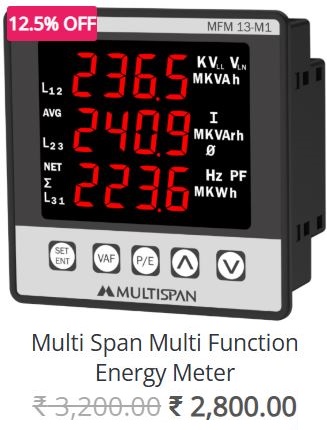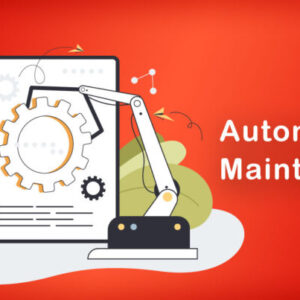In the world of manufacturing and industrial operations, equipment reliability is crucial. Without properly maintained machinery, even the most well-planned processes can come to a halt. That’s where Autonomous Maintenance (AM) comes into play. It’s an innovative approach that involves empowering operators to take responsibility for the basic upkeep of their equipment. By shifting the focus from reactive maintenance to proactive care, Autonomous Maintenance helps improve productivity, reduce downtime, and extend the lifespan of critical machinery.
In this blog, we’ll explore what Autonomous Maintenance is, the benefits it offers, and the key steps for successfully implementing it in your organization.
What is Autonomous Maintenance?
Autonomous Maintenance (AM) is a maintenance strategy in which operators take an active role in maintaining the equipment they operate. Rather than relying solely on specialized maintenance personnel, operators are trained to perform basic maintenance tasks such as cleaning, lubricating, inspecting, and tightening machine parts. This approach is part of a larger framework called Total Productive Maintenance (TPM), which focuses on maximizing equipment uptime and performance through operator involvement.
In essence, Autonomous Maintenance aims to shift the responsibility for routine maintenance from maintenance technicians to the operators themselves. By doing so, it not only empowers the workforce but also helps prevent minor issues from turning into major breakdowns. Operators are positioned as the first line of defense against equipment failure, ensuring a more seamless and efficient production environment.
Benefits of Autonomous Maintenance
1. Improved Equipment Reliability and Lifespan
Regular cleaning, lubrication, and inspections ensure that machinery operates at its optimal capacity. By catching issues early—before they develop into major faults—operators can prevent unnecessary wear and tear, reducing the frequency of breakdowns. This proactive approach significantly extends the life of equipment, ultimately saving costs related to repairs and replacements.
2. Reduced Downtime
Unplanned downtime is one of the most costly challenges in manufacturing operations. When operators are responsible for maintaining their own equipment, they can address minor problems as soon as they arise. This reduces the chances of a machine failure that would require costly repairs or lead to extended downtime. With a well-established AM program, production lines can stay up and running with minimal interruptions.
3. Cost Savings
Autonomous Maintenance reduces the need for external maintenance services for routine tasks, which cuts costs significantly. By eliminating the dependency on specialized technicians for minor fixes, the organization can reallocate resources and reduce overall maintenance budgets. Additionally, the extension of equipment lifespan and reduced downtime also lead to long-term cost savings.
4. Enhanced Operator Engagement and Skill Development
One of the key benefits of Autonomous Maintenance is the empowerment it offers to operators. As they take on more responsibility for machine upkeep, they become more knowledgeable about the equipment they work with, enhancing their skills and confidence. This sense of ownership fosters greater job satisfaction and engagement, as operators feel more invested in the machinery and the success of the production process.
5. Prevention of Major Breakdowns
Minor issues like dirt buildup, loose parts, or small leaks can go unnoticed if left unchecked. AM encourages operators to regularly inspect and maintain their equipment, enabling them to identify potential problems early. By addressing these small issues before they escalate into major failures, organizations can avoid costly repairs and lost production time.
6. Boosts Teamwork Between Operators and Maintenance Technicians
While operators take on the responsibility of routine maintenance, they still rely on maintenance technicians for complex repairs and issues beyond their scope. This creates an environment of collaboration between operators and maintenance personnel. Together, they can share insights, communicate better, and ensure the smooth running of equipment.
Key Steps for Implementing Autonomous Maintenance
Successful implementation of Autonomous Maintenance requires careful planning, training, and support. Here are the key steps to get started:
1. Training and Education
Before operators can take on maintenance responsibilities, they need to be properly trained. This involves educating them about the equipment they work with, understanding how to perform basic maintenance tasks, and recognizing early signs of potential problems. Training should also include safety protocols and proper documentation of maintenance activities.
2. Define Clear Responsibilities
Clearly outline the tasks operators will be responsible for in the AM program. This might include cleaning, lubricating, tightening bolts, checking for leaks, and performing visual inspections. It’s essential that these tasks are well-defined to avoid confusion and ensure that operators know exactly what to do on a daily, weekly, or monthly basis.
3. Establish Standard Operating Procedures (SOPs)
Develop and document clear Standard Operating Procedures (SOPs) for each maintenance task. These guidelines should outline the steps to follow, as well as the tools, equipment, and safety measures required for each task. SOPs help ensure that operators consistently perform maintenance tasks correctly, which is critical for the success of AM.
4. Provide the Right Tools and Resources
Operators need the proper tools and equipment to carry out maintenance tasks effectively. This includes access to cleaning materials, lubricants, inspection tools, and maintenance manuals. You may also want to provide digital tools such as tablets or software for logging maintenance activities and tracking equipment performance.
5. Create a Supportive Maintenance Team
While operators take on the majority of routine maintenance tasks, there will still be situations where a skilled technician’s intervention is needed. Build a support system where maintenance technicians can step in for more complex repairs. Technicians should also provide guidance and mentorship to operators to help them develop their skills further.
6. Monitor Performance and Make Adjustments
Once the AM program is in place, it’s important to monitor its effectiveness. Track key performance indicators (KPIs) like equipment uptime, the frequency of unplanned downtime, and the number of minor repairs performed by operators. Regularly review the process to identify areas for improvement and adjust as necessary.
7. Foster a Culture of Continuous Improvement
Autonomous Maintenance is not a one-time implementation; it’s an ongoing process. Encourage operators to continuously improve their skills and find new ways to enhance maintenance practices. Regular feedback loops, team discussions, and a culture of shared learning will help AM evolve and grow over time.















